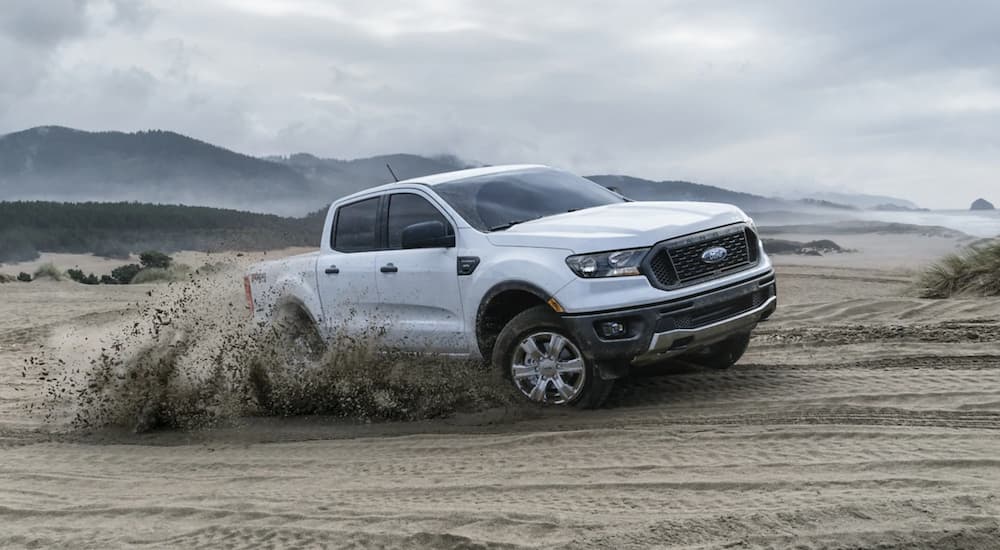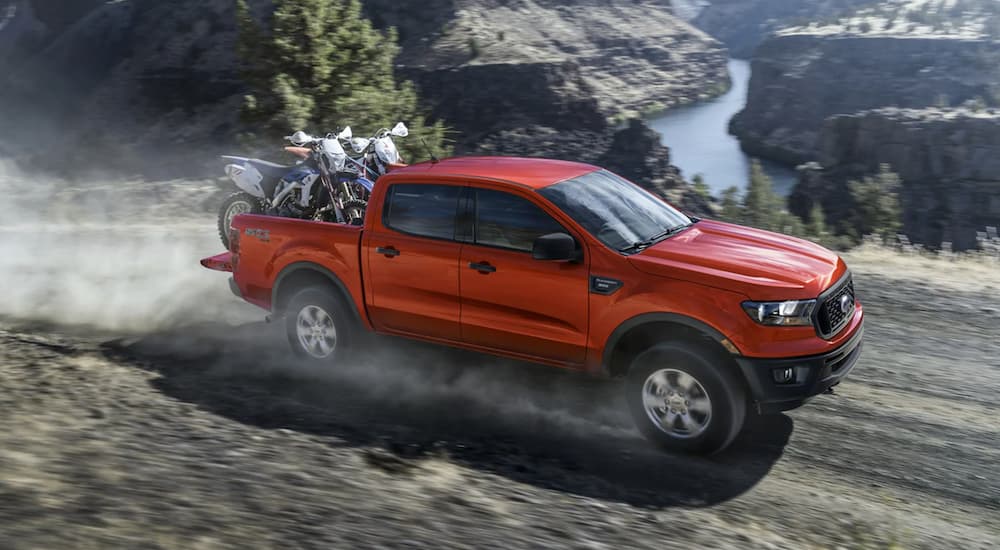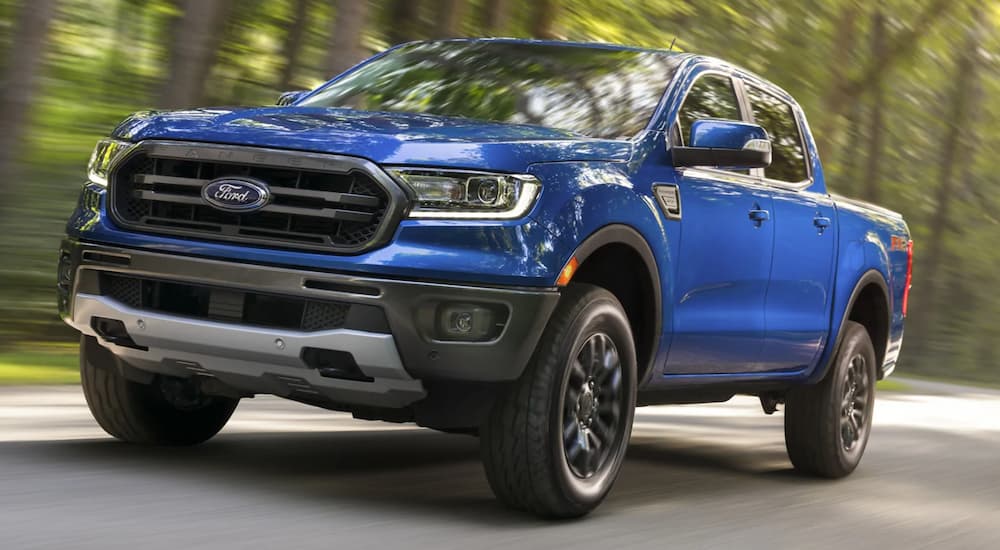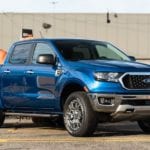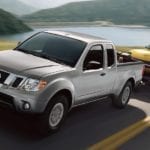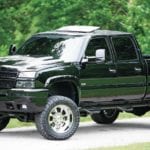You just drove off of the lot in your brand new 2021 Ford Ranger; what are your big plans for your new ride? Well, there are several options depending on your lifestyle. Perhaps you are planning to hitch up the camper and set out on a road trip with the family, or maybe you want to tackle a super-difficult mountain trail, or perhaps you want to take your new truck out to a private strip of land and see how fast you can go. While these are all great ideas, it might be best to put off overworking your truck until it has been properly broken in. Everything about your new truck brings you joy, the new truck smell, the sound of the powerful engine, and the wind in your hair as you cruise down the street with the windows open, but there are break-in suggestions you should consider.
Break-in periods for new trucks were a lot longer back in the day; many manufacturers used to recommend at least 1,000 miles of wearing kid gloves while driving your new truck. Things have changed; modern trucks only require a 500-mile breaking-in period. Think about it, your new truck is full of individual components that have just met, and they need time to get to know each other, so it is best not to put the pedal to the metal of your new truck right away. Here are the steps you should take to break in your brand new pickup truck.
I Can’t Drive 55
Older truck owners will remember Sammy Hagar’s 1980s hit I Can’t Drive 55, a song about the National Maximum Speed Law enacted in 1974. In short, Sammy is bummed because the speed limit was reduced to 55 mph in California, which he thinks is unfair. Well, for the first 500 miles in your new truck, you should keep your speed limit at or below 55 mph, so don’t be like Sammy.
Several vehicle manufacturers recommend that you keep your new truck below 55 mph for at least the first 500 miles; for those of you who own a new Ranger, Ford recommends you drive at lower speeds for the first 1,000 miles. It’s not likely that you would do any harm to the engine should you go faster, but it is a crucial period for the engine if you expect a long and healthy powertrain. You should steer clear of high speeds to avoid valve and ring seating issues, but keep in mind that your automatic transmission also needs to be properly broken-in as well.
Variety is the Spice of Life
Read any new truck owner’s manual, and it will say how important it is not to drive with a constant RPM for a sustained amount of time. In other words, don’t take your truck onto the highway and lock in at 55 mph. It is far better to spend the first few thousand miles cruising around the city, where your truck can enjoy varied RPMs. When you take a look at the owner’s manual, it states that you should vary the speed of your Ford Ranger and change gears early to avoid high RPMs during the first 1,000 miles. The reason you want to vary your speed is so that everything is aligned and working properly, which will go a long way in ensuring your truck engine performs as well as it should for years to come. Choosing not to vary your RPMs can reduce overall engine performance down the road. Once the break-in period is over, your 2.3-liter Ecoboost engine can be utilized using all 270 horsepower.
Avoid Taking the Pedal to the Metal
We get it, you just bought a brand new truck, and one of the first things you want to do is experience the powerful engine by getting out on the highway and punching the gas pedal. Well, that exhilarating feeling you get when you fully open the throttle will have to wait until after the break-in period. A new engine has many components that need time to work well with the other parts. When you put the gas pedal to the floor, the Ford 2.3-liter engine spins faster and generates a lot of heat which can have a negative effect on the parts and components. You should check the owner’s manual to see how long you must wait before you can fully unleash the beast, but many manufacturers recommend gentle acceleration for the first 500 miles or so.
Tow, Tow, Tow Your Boat
We’ll let you in on a little secret; many people decide to buy a new truck because they want the ability to tow things, like that new boat you bought for weekend adventures. Unfortunately, towing that new boat to the lake is going to have to wait until after the break-in period. Most owner’s manuals will tell you that you shouldn’t tow anything for the first 500 miles, while others will recommend that you wait until at least 1,000 miles before towing anything. Even though the 2021 Ranger can tow up to 7,500 pounds, which is best in class, the owner’s manual specifies that you shouldn’t tow anything at all for the first 1,000 miles.
Towing a boat or anything else puts a lot of strain on the truck’s transmission and drivetrain, which is something you want to avoid until after the break-in period. It is also a good idea to refrain from loading your Ranger up with heavy gear or equipment for the first 1,000 miles; after that, it is perfectly fine to utilize the best-in-class 1,860 pounds of payload capacity. The good news is that after the break-in period, you can tow the biggest boat that your truck can handle.
Stop, In the Name of Truck Love
For the first several hundred miles of your new truck life, do your best to gently press down on the brake pedal when coming to a stop. Most brake pads require about 200 miles or so to properly wear-in and seat against the calipers and rotors. Hard braking during this critical period of time will cause your brake pads to wear prematurely, which means you will have to get a brake job sooner than anticipated.
When you go easy on the brakes, you will get many more miles of reliable performance from your brake pads. However, if there is an emergency situation in which you need to slam on the brakes to avoid a collision, by all means, do so. In addition to easing up on the brakes, your Ford manual states that there is a 300 mile break-in period for the tires, which might exhibit unusual driving characteristics during this period.
Inspector Clouseau
It is a good idea to become a world-class inspector when you purchase a brand new truck. While the vast majority of trucks that are sold have no problems with them, there is a small chance that something could be amiss with yours. For example, a truck that escaped a thorough quality control check could have an oil leak or some other minor problem that could turn into a huge mess. So it is in your best interest to pop open the hood and visually look for anything that could indicate a problem. This isn’t to say that your Ranger will have a problem since it most likely won’t, but you should always check anyway.
Ch-Ch-Ch-Ch-Changes
At the end of the break-in period, an oil change is important. Getting an oil change after the first 500 miles will give technicians a chance to inspect the engine oil to see if there is anything amiss. It also gives them a chance to inspect other components to ensure everything is looking good. If they do happen to find something wrong, they can deal with potential problems before they become more problematic. Oil changes for your Ford Ranger should happen once every 5,000 miles or so, depending on the oil type and how many miles you have on it, though you should consult your owner’s manual to see what is recommended for your specific truck.
It’s Time to Break in Your Ford Ranger and Have a Little Fun
There are many rewards in buying a brand new 2021 Ford Ranger, including that new truck smell, the shiny coat of paint, and the anticipation of a much-deserved road trip. However, it is important that you follow the owner’s manual and take it easy with your new truck until after the break-in period. And while the engine break-in period is often a hotly-debated subject, it is always far better to be safe than sorry. Even though there are differing opinions on the matter, most will agree that a properly broken-in engine will last longer and perform better over the course of its life. Remember that a new truck is an investment, one of the biggest investments of your life, so it is in your best interest to treat it right.
